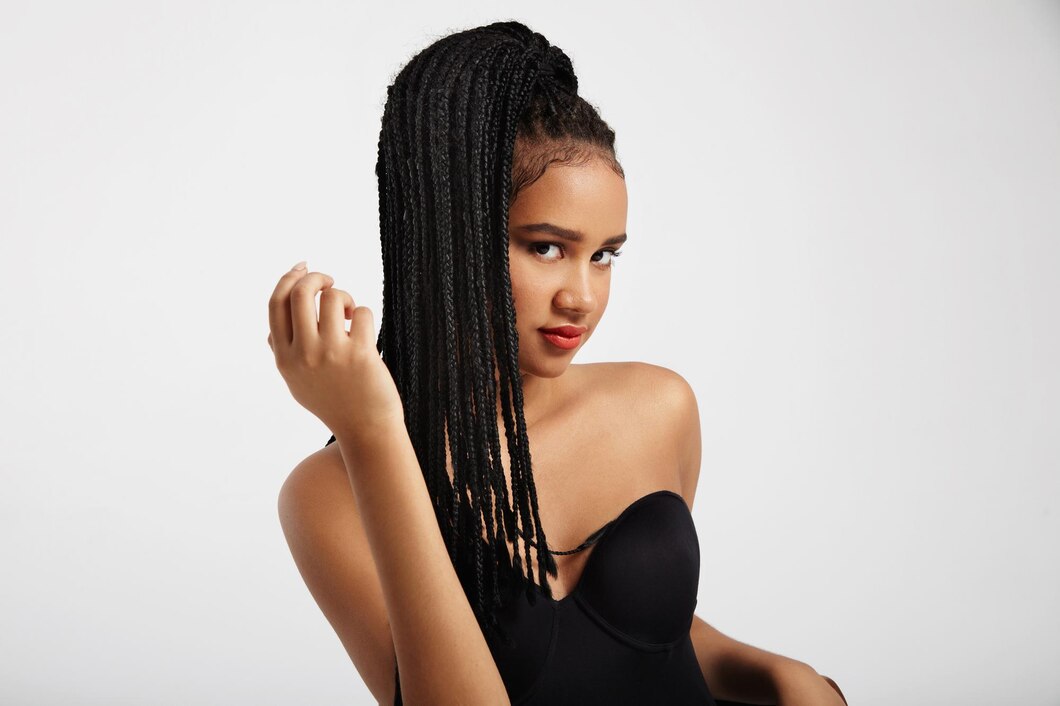Natural hair enthusiasts in South Africa have embraced protective styles as a means to promote hair growth, minimize damage, and celebrate the rich heritage of African beauty. Protective styles offer versatility and can be adapted to various textures and lengths, making them a popular choice for those looking to maintain healthy, natural hair. Here’s a guide on how to rock protective styles and keep your natural hair thriving.
1. Understanding Protective Styles
Protective styles are hairstyles that minimize hair manipulation and protect the ends of your hair from environmental damage. These styles include braids, twists, wigs, weaves, and updos. The goal is to reduce breakage and retain length by keeping the hair shielded from harsh elements and over-styling.
2. Choosing the Right Style
Selecting the right protective style depends on your hair type, lifestyle, and personal preference. Here are a few popular options:
- Braids: Box braids, cornrows, and Fulani braids are timeless choices. They can last for weeks and are perfect for low-maintenance routines.
- Twists: Senegalese twists, Marley twists, and two-strand twists are great for a natural look and are less tension-inducing than some braiding styles.
- Wigs and Weaves: These offer a wide range of styling possibilities without manipulating your natural hair. Ensure your hair underneath is well-moisturized and not neglected.
- Bantu Knots and Updos: Ideal for shorter hair lengths, these styles protect the ends and can be styled elegantly for various occasions.
3. Preparing Your Hair
Preparation is key to ensuring your protective style promotes hair health rather than causing damage. Here’s how to prepare:
- Cleanse: Start with a clean scalp and hair. Use a gentle, sulfate-free shampoo to remove buildup.
- Condition and Detangle: Deep condition your hair to strengthen it and ensure it’s well-moisturized. Detangle with a wide-tooth comb to avoid breakage.
- Moisturize: Apply a leave-in conditioner followed by an oil or cream to seal in moisture. This step is crucial to prevent dryness while your hair is in a protective style.
4. Installing the Style
When installing your protective style, ensure that it’s not too tight to avoid tension and breakage. Seek a professional stylist who understands natural hair care if you’re not confident in doing it yourself. Communicate clearly about the desired tension and maintenance to ensure your hair’s health is prioritized.
5. Maintaining Your Style
Maintaining your protective style is essential to prevent damage and ensure your natural hair remains healthy:
- Moisturize: Regularly spritz your scalp and hair with a water-based moisturizer or leave-in conditioner. Follow up with a light oil to lock in moisture.
- Cleanse: Clean your scalp with a diluted shampoo or a no-rinse scalp cleanser to prevent buildup and itchiness.
- Protect at Night: Wrap your hair with a satin or silk scarf, or use a satin pillowcase to reduce friction and maintain moisture.
6. Knowing When to Take it Down
Protective styles should not be left in for too long. Generally, styles like braids and twists can be kept for 4-8 weeks, while wigs and weaves might last longer with proper care. Listen to your hair; if it starts feeling dry, itchy, or you notice significant growth at the roots, it’s time to take it down.
7. Post-Style Care
After taking down a protective style, give your hair some TLC:
- Detangle Gently: Use a detangling conditioner and a wide-tooth comb to gently detangle your hair.
- Deep Condition: Replenish moisture and strength with a deep conditioning treatment.
- Trim if Necessary: Regular trims help prevent split ends and maintain healthy hair.
Embrace the Journey
Rocking protective styles is not just about convenience; it’s a celebration of natural beauty and cultural heritage. In South Africa, where natural hair is a powerful expression of identity, protective styles allow for creativity, versatility, and healthy hair practices. Embrace the journey, experiment with different styles, and enjoy the benefits of maintaining beautiful, natural hair.








